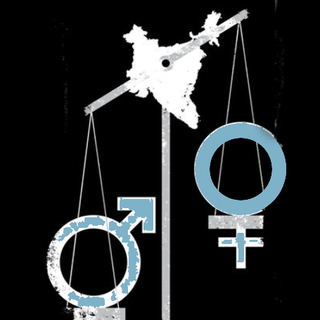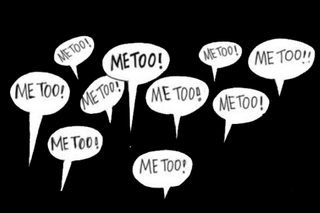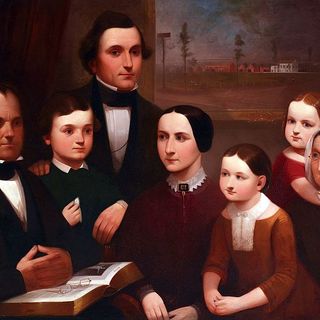
Stop Looking for the Perfect #MeToo Victim
Imperfect humans will birth imperfect stories, but that shouldn’t stop us from attempting to perfect the #MeToo movement.

Why did you dress like that? Were you drunk? Oh, he took you home. Why didn’t you say no? You should have told him to stop the car and get out. Oh, he tried to kiss you. You should have left the house. You should have said no, loudly. Why didn’t you say something? You’re hurt. Go to the police. Why are you so calm? You don’t look like someone who’s been raped. Say something. Don’t smile. Do you have screenshots of his texts? Why did you contact him again? You’re lying.
Society has this indefatigable idea of the perfect victim:she is nice to her neighbors and dutiful to her parents, tries really hard not to be assaulted, fights her way through any harassment and rape, and when her efforts fail, she goes to the authorities, appears discernibly upset and traumatized, bears the appropriate signs of physical struggle and abuse, has the DNA for the rape kit, is able to recount in perfect, excruciating detail what happened to her, and is unequivocally emboldened to relay it to institutions she trusts. This idea has been even more cemented during #MeToo, a movement wherein so many women spoke up against sexual harassment and assault, we literally didn’t know what to do with them.
Except … this person does not exist. No woman is trying to be assaulted, regardless of her clothing or her level of inebriation. No woman always kicks and screams when a man is trying to assault her; sometimes, laying still and letting it happen is the best way to get out of it alive. No woman has unquestioning trust in the authorities that have a historical precedent of victim-shaming trauma survivors. No woman reacts to the trauma of being harassed or assaulted the same as another woman. No woman keeps stringent records of a traumatizing incident. No woman is the perfect victim.
Related on The Swaddle:
Backlash Against the #MeToo Movement Shouldn’t Overshadow its Significance, Successes
When Dr. Christine Blasey Ford accused current U.S. Supreme Court Justice Brett Kavanaugh of sexually assaulting her in 1982 (she was then 15 and Kavanaugh was 17) and agreed to testify in a hearing that would determine whether Kavanaugh became a Supreme Court judge, prosecutor Rachel Mitchell attempted to tear down her testimony. She asked Ford how she got home the night of the assault; Ford repeatedly said she didn’t remember. Mitchell asked her if she was “sure-sure” Kavanaugh was her attacker and not someone who looked like him; Ford repeatedly confirmed. “And then, grasping at the thinnest of straws, Mitchell questioned Ford about her fear of flying, because hadn’t she flown to Washington, D.C., for this very hearing? And therefore, had she lied about that fear, just to get out of an interview with the committee? And therefore, was this whole thing a lie? And therefore, was Ford — a woman who had voluntarily taken a polygraph test and requested an independent FBI investigation into her allegations — a liar, liar, liar?” Caitlin Moscatello writes for The Cut.
As soon as a woman comes out with a sexual harassment or assault allegation, those self-appointed to determine the veracity of her account start poking holes in her story. But humans are imperfect, so are their memories, and so are their stories. When someone experiences trauma, for example, their brains file away the negative emotions and details related to the incident in deep crevices almost inaccessible to consciousness, The Swaddle has reported. If long-hidden memories of trauma need to be revived and retold, such as in Ford’s case, they won’t come pre-packaged in perfectly-documented play-by-plays, but in spurts and bursts; Ford, for example, knew she was assaulted by Kavanaugh, what she wore or what she drank that night vividly, but had no recollection of how she got home. The latter discrepancy was used to discredit her testimony; it also shed light on how pathetic the public’s understanding of trauma is.
For many women, however, it doesn’t even get to the point when their memories are dissected. It’s their actions that are. For example, convicted rapist Bill Cosby’s defense attorney Kathleen Bliss speaks of model Janice Dickinson, one of several women who accused Cosby of rape, thus: “It sounds as if she slept with almost every single man on the planet. … Is Ms. Dickinson really the moral beacon the women’s movement wants?” Vox reported. Here, it isn’t Dicksinson’s trauma or even the retelling of it, that was put on trial; it was her past and her character. Rape is not sex, and equating an abstract idea of morality with Dickinson’s trauma — a practice indulged in too often in Indian society — disqualifies most women from the pedestal of the perfect victim.
For example, after the Nirbhaya rape case that rocked India half a decade ago, Rashtriya Swayamsevak Sangh chief Mohan Bhagwat had said, “Crimes against women happening in urban India are shameful. It is a dangerous trend. But such crimes won’t happen in Bharat or the rural areas of the country. You go to villages and forests of the country and there will be no such incidents of gangrape or sex crimes,” Economic Times reported. “Where ‘Bharat’ becomes ‘India’ with the influence of Western culture, these type of incidents happen. The actual Indian values and culture should be established at every stratum of society where women are treated as ‘mother.'” The implication of his statement is: should the modern Indian woman express herself in “Western” ways, dare to go out in urban cities, and shirk her traditional roots, it’s on her if she is raped. Bhagwat’s assertion further speaks to the lack of accountability men enjoy when it comes to their violation of women’s agencies; the modern environment, and the woman’s audacity to exist in it becomes the culprit. Hence, no urban woman can be absolved of her part in her assault.
Often, the perpetrators in cases of sexual harassment and assault — mostly men — are painted as fallible, but generally nice, people who made a mistake. They’re believed and accepted to be imperfect in their villainy, while women are expected to wear their trauma in graceful, perfect ways. The perpetrator is innocent until proven guilty, while the accuser loses their innocence with every slip, remaining on trial forever.
The concept of the infallible sexual assault survivor was blown up when director Asia Argento, who emerged as one of the outspoken survivors against Harvey Weinstein, was found to have reportedly sexually assaulted Jimmy Bennett as a minor, and then to have ostensibly paid him off to silence him. Other #MeToo activists distanced themselves from Argento, and suspicions started abounding as to the veracity of her account against Weinstein. What critics missed, however, was that both of those instances could be true: Argento could have suffered sexual abuse at Weinstein’s hands and could have perpetrated the same kind of abuse to another human being. While Argento’s case is extreme, many women’s testimonies are rendered inadmissible for far more benign instances in their past.
Related on The Swaddle:
#MeToo is Making People Confront Their Trauma. And Most Are Unequipped to Do So
It makes sense then, that these women, especially those who are not white, blonde, and married, also distrust law enforcement and judicial institutions because of experiences like Dickinson’s, for fear they will be blamed for their own trauma. This is seen in Netflix’s Unbelievable, based on a true story reported by ProPublica in 2015, in which a teenage girl transitioning out of foster care is raped and not believed by police officers when she reports the crime. The officers think of her as a reckless, promiscuous and unreliable teenager, and refuse to help her reckon with her trauma. The girl, trying to get past her rape, is shown being matter-of-fact, tight-lipped, and short, which officers take to mean difficult, but not upset. Here, she gets ruled out as imperfect — and therefore not a victim — because her emotions aren’t perceptible to a few men incapable of perceiving them; within the span of a few short interviews, they charge her with trying to file a false complaint.
It’s no surprise then, that many survivors of sexual assault and harassment don’t seek legal recourse through the courts; sitting through the ordeal, while the immensely heavy burden of idealized proof shatters survivors’ dignity and grit under its weight, only retraumatizes them. This happens often enough that 99.1% of cases of sexual assault and harassment go unreported in India, according to LiveMint.
Often, and first, it’s the women’s character and their reactions, not factual retellings of their trauma, that are put on trial. For women from marginalized communities, such as women of color, trans and non-binary women, Dalit women — the myth of the perfect victim is even farther away, because it’s not their memories that make them imperfect, but their existence.
For example, when high-profile white actresses such as Ashley Judd came out with the initial sexual abuse allegations against Harvey Weinstein, the media mogul-turned-rapist kept quiet. But when actresses of color Salma Hayek and Lupita Nyong’o came out with their sexual misconduct allegations against him, Weinstein decided to speak up and deny them. In an interview with Variety, Hayek said, “We are the easiest to get discredited. It is a well-known fact. So he went back, attacking the two women of color, in hopes that if he could discredit us.”
At home in India, Dalit women suffer a similar fate. A National Crime Record Bureau shows crimes against Dalits have increased by 51% in the last 10 years, a majority of which is sexual violence targeted at women, News18 reported. “When Nirbhaya happened, entire Delhi came on the streets to protest. We see Dalit women raped and abused in a similar fashion almost every other day, with no reaction from anybody at all. You know what is even more saddening? Most women have accepted that this is how it is supposed to be. Those men from upper caste will treat them the way they want and they will have to live with it,” Kaushal Devi, a social worker with Dalit Sthree Sakthi, an NGO, told News18. For women from marginalized communities who have suffered sexual abuse, their disadvantaged status in society informs others how worthy they are of justice, which more often than not signals society doesn’t deem them worthy at all.
Looking at all the credible, logical ways in which a woman’s testimony can harbor discrepancies, practically every allegation of sexual harassment or assault can be poked full of holes, if that’s one’s goal, especially because society’s methods of discerning the truth are faulty. If she stayed with her abuser even after the abuse — prick. Nevermind all the factors that a woman needs to evaluate before leaving her abuser, such as loss of financial resources, loss of companionship, lack of support systems and an inability to make clear-headed decisions borne out of trauma. If she didn’t believe it was rape that happened to her — another prick. Nevermind women are conditioned to receive and accept pain and are often gaslit into disbelieving their understanding of their own life events. None of the abovementioned inconveniences that accompany calling out sexual abuse mean it didn’t happen.
And since the process of calling it out is itself an inconvenient practice for perpetrators, those dedicated to maintain and protect patriarchal privilege in society have devised an impossible rubric that expects these allegations to fall neatly into convenient little fail-safe boxes. But it’s messy. The process drags not only the perpetrator but the survivor down; it takes down every single person that decided to speak up for either side. This is not an indication we stop talking about this, or that the movement isn’t working; this is the time we realize it’s not easy to overturn a centuries-old social system and evolve our conversations beyond whether the survivor’s story is airtight; it’s time we focus our efforts more on the systems that fail to provide justice, than retraumatizing individual women who speak up. One woman doesn’t make a movement after all, nor should her fallibility cause its downfall.
Yes, women’s allegations can be poked full of holes. Sure, there will be discrepancies. No, that doesn’t mean they’re lying. Now what?
Rajvi Desai is The Swaddle's Culture Editor. After graduating from NYU as a Journalism and Politics major, she covered breaking news and politics in New York City, and dabbled in design and entertainment journalism. Back in the homeland, she's interested in tackling beauty, sports, politics and human rights in her gender-focused writing, while also co-managing The Swaddle Team's podcast, Respectfully Disagree.
Related


East, Central and Southern Asia Have the Most Instances of Child Labor Globally: ILO Report
